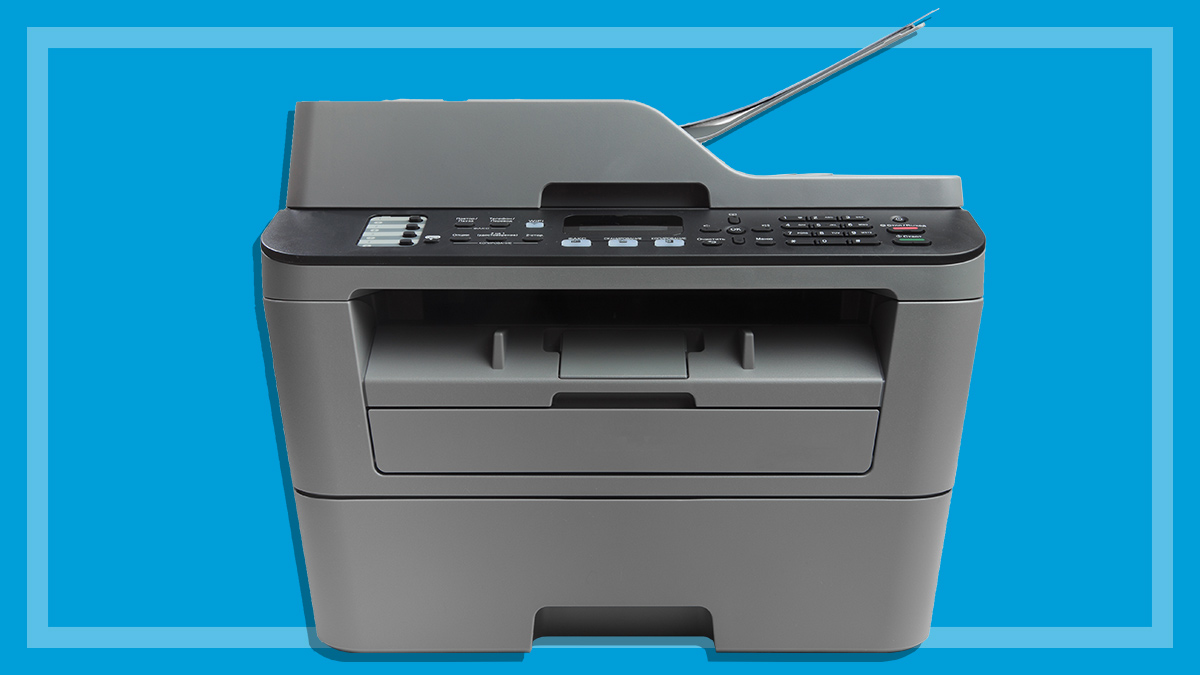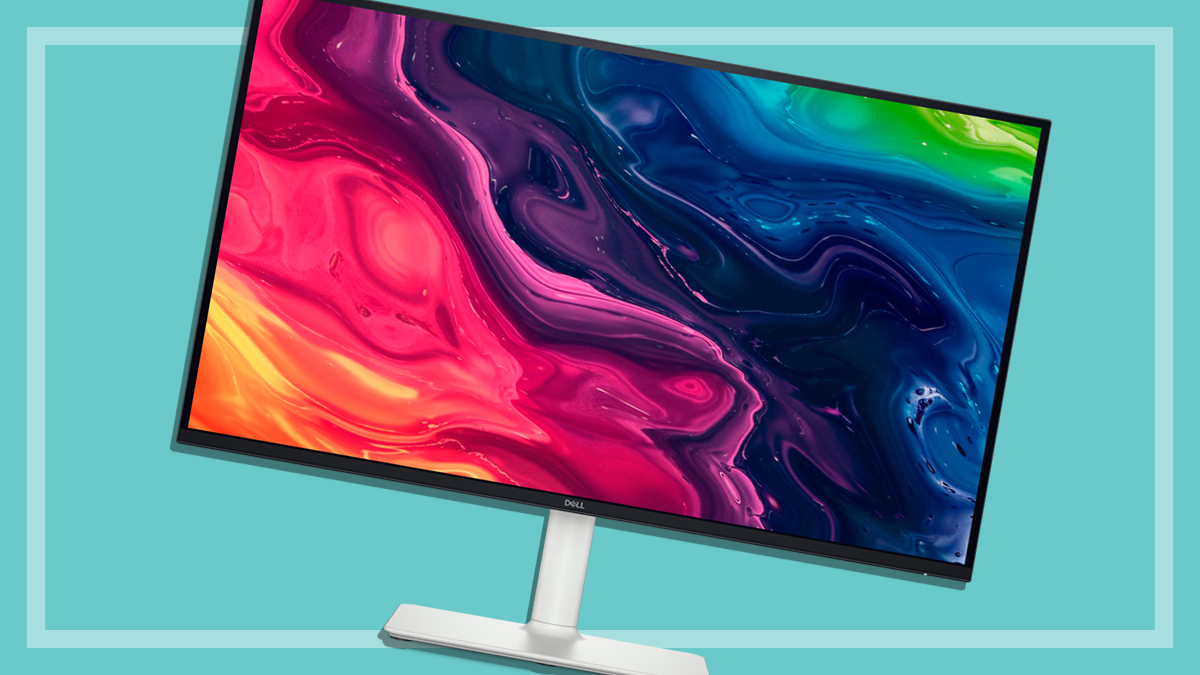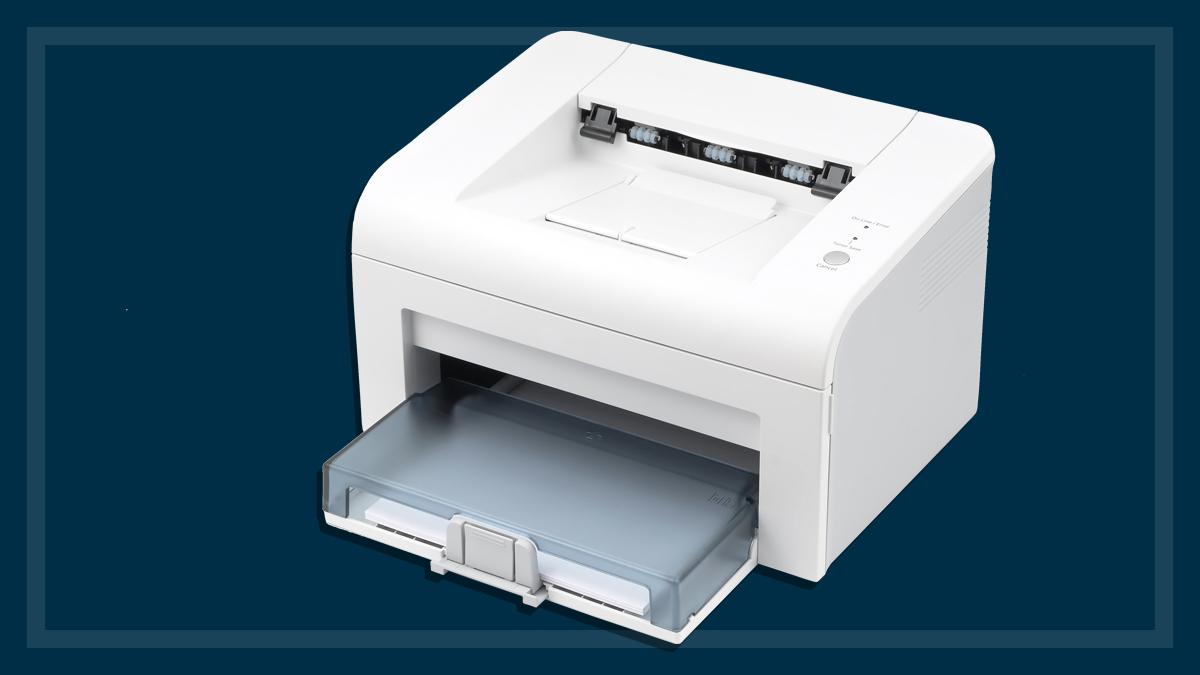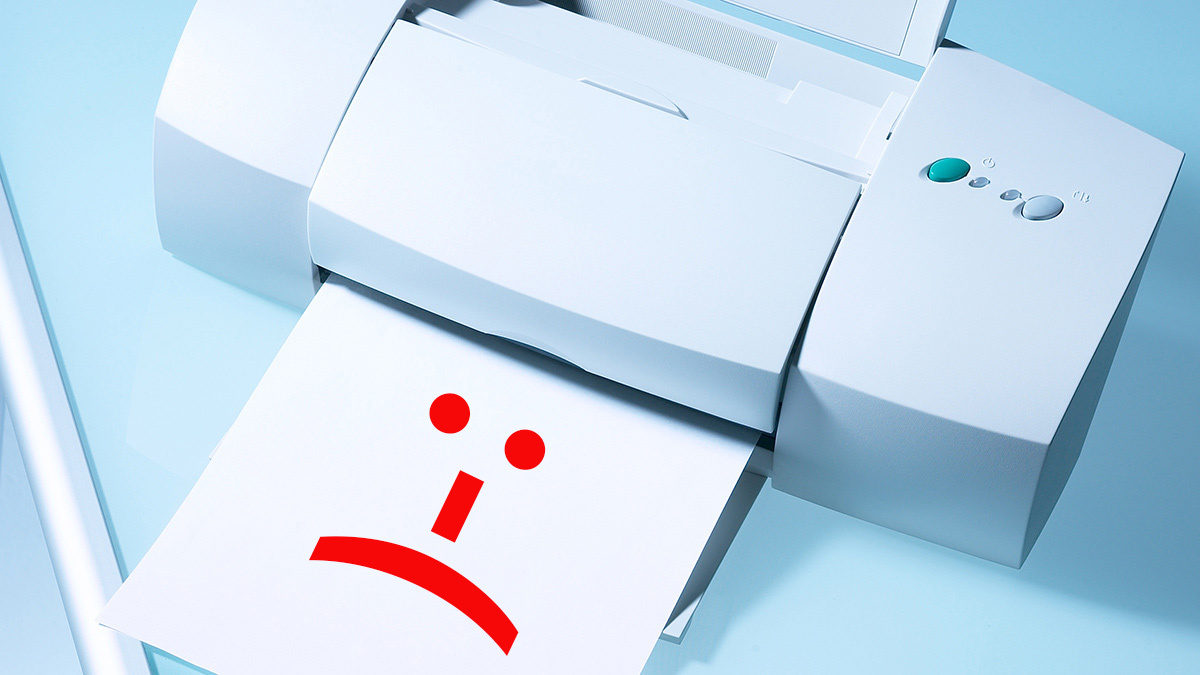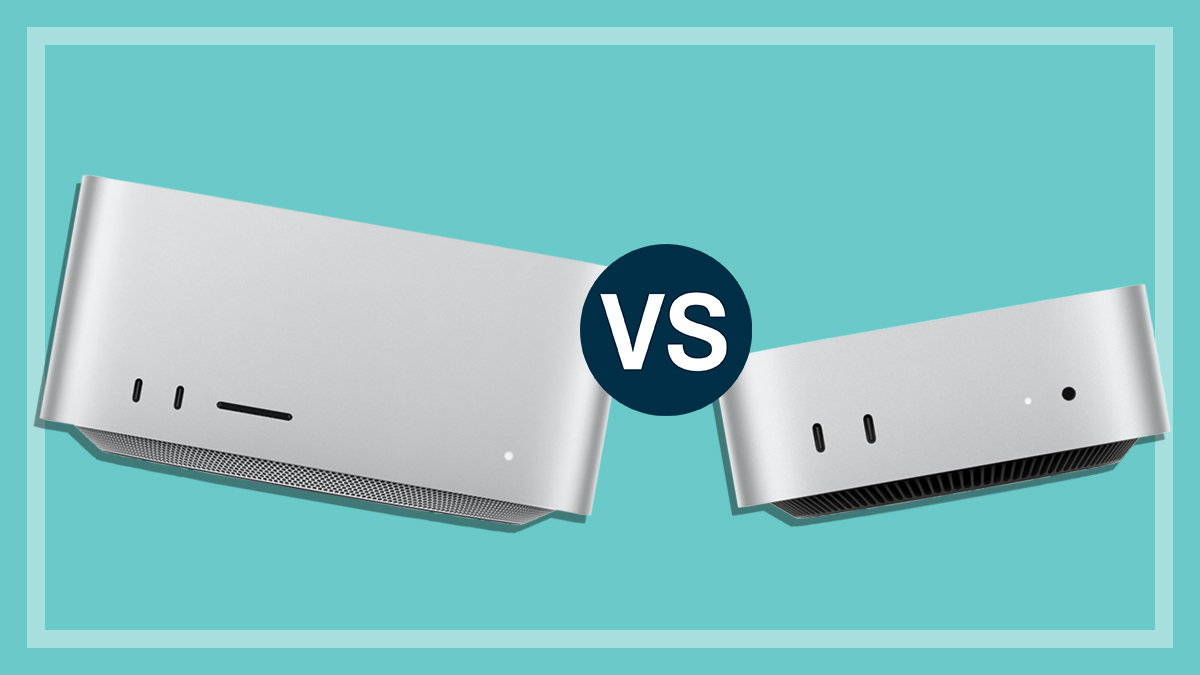Get our independent lab tests, expert reviews and honest advice.
How to buy the best printer
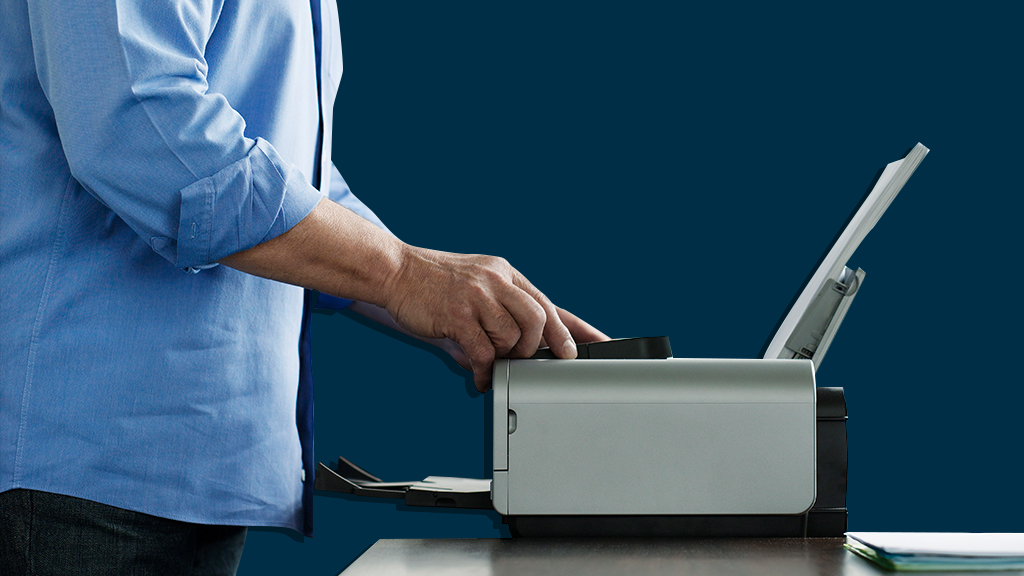
We help you find the best home printer for you, whether it’s to print photos or documents, colour or black and white, and whether you want a model that can scan and photocopy too.
On this page:
- What's the best printer to use at home?
- What's the difference between inkjet and laser printers?
- Saving money on printer ink
- How to connect a printer to a PC or Mac
- How to use a printer with a smartphone
- How much do printers cost?
- How to recycle an old printer
You could spend anywhere from $100 to more than $1000 on a home printer but it’s important that you factor in the cost of ink, which often ends up being more expensive than the printer itself.
Do you need a printer at home?
We’re all guilty of printing off a few sneaky sheets at the office. But if you’re grabbing something other than the occasional document, you should consider buying a basic model for your house. This checklist can help you work out what you need.
- How much and how often do you print?
- How important is the quality of your print-out?
- How much has to be in colour?
- Do you print photographs to keep?
- Do you need to print on A3 or other sizes of paper?
- Do you need your printer to act as a scanner and copier too?
- How many devices (PCs, tablets, smartphones) do you want to print from?
- Do you want to print directly from a phone or camera without using a computer?
Do you need a colour printer?
Do you need to print in colour? Colour cartridges cost significantly more than black, for both laser and inkjet printers. Some printers don’t just use black ink to print a black and white page – they can use as much as 50% from the colour cartridges, driving up the cost per page. This is more likely to be the case if the printer is really intended to print photographs.
Mono printers (laser only), are generally cheaper and smaller than colour printers. They cost as little as $50 on sale and are usually economical on ink.
Most colour printers will stop working when one of the ink/toner cartridges runs out, even if you just want to print with black only (sometimes called ‘mono’ mode). This is because many colour printers mix in a little colour ink/toner even to print black text (which makes the black look ‘richer’).
Laser printers with a dedicated “mono mode” will usually allow you to continue to print until black toner runs out. Check with your printer’s instruction manual first, as the function varies from brand to brand and model to model.
Inkjet models may also allow you to temporarily print using black-only (mono) mode even when a colour cartridge is empty. However, this may be allowed only for a limited time, as printing without ink can suck air and grit into the empty cartridge and risk damaging the print heads.
Mono mode, if available, may be able to be used indefinitely to save on colour ink usage if the colour cartridges are not empty. Check your printer’s instruction manual.
What’s the best printer to use at home?
You’ll find two types of printers for sale. Standard, which is just a printer, and multifunction (or MFP). These are an all-in-one device better suited for home offices, as they let you print, scan, copy and even fax if you’re living in 1995.
If you need to scan or copy documents from time to time, consider a separate scanner as they cost around $150. Having a separate scanner means one less point of failure for your printer, but you’ll need the computer to be switched on to use it, and it may not be as simple to make copies.
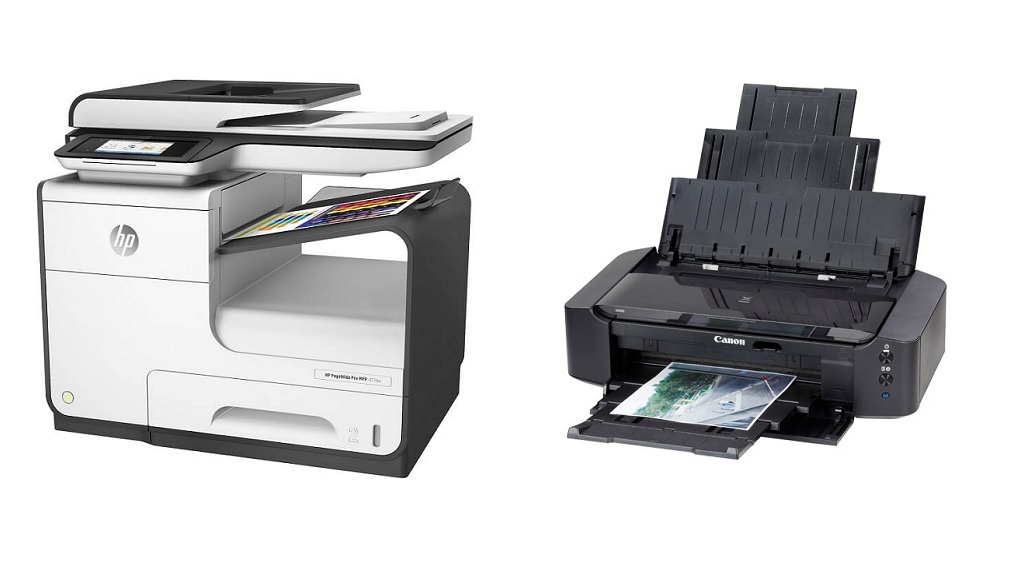
What’s the difference between inkjet and laser printers?
There was a time when you could make a clear distinction between inkjet and laser. Inkjets delivered top-quality prints with vibrant colours across a range of paper types (including photo), but the ink costs were high and they required regular maintenance.
Laser printers, meanwhile, were the more functional, affordable option designed for pumping out pages and pages of documents on the cheap. The trade-off was lower quality photo prints so they’ve always been the preferred alternative for businesses where text and graphic quality weren’t as important.
But times change. Though ink costs for the most part remain high when using standard cartridges for separate colours, they’ve become much more efficient and affordable; particularly if you use one of the refillable tank (aka CISS) systems. Many models are just as fast as one another and both types can handle bulk printing with ease.
Today, you have a range of inkjet and laser options to suit your budget and text/image quality demands. The best way to find the most suitable printer for your needs is to check our test results.
Inkjet
Inkjet printers can produce sharp, vibrant, top-quality prints across a range of paper types. They’re ideal for everything from documents to photos but ink costs can be an issue for some models. However, the introduction of printers from HP, Epson and Canon with refillable tanks deliver some affordable options for those with high print volume needs.
Inkjets can print on heavier speciality papers such as gloss photo paper to produce lifelike photo-glossy prints suitable for framing, or directly onto printable CD/DVD blanks.
They work best when used regularly, to minimise head-cleaning cycles and avoid problems such as clogged heads when left unused. In fact, some models use a lot of ink during the cleaning process. We’ve listed these in our test results.
Inkjets also have a wider range of ink cartridges. Some, especially the cheaper ones, bundle the colours together, so you’re forced to buy a new cartridge when one of the colours runs out. Others have not only the standard black, cyan, magenta and yellow, but also “photo black”, “photo cyan”, “photo magenta”, “light cyan”, “light magenta” or “grey”.
Though the cost of ink itself may not be higher, there are more cartridges to replace and more left over when the printer finally expires. This can drive up the cost, but a number of manufacturers sell models with refillable tanks that can significantly decrease running expenses.
While inkjet models used to print at a slower rate than lasers, speeds have improved over time.
Laser
Laser printers can’t match the quality of a good inkjet model, but they typically use less ink when printing and cleaning. They also don’t have ink heads which means they can sit idle for longer periods without clogging issues.
Lasers tend to be a bit more functional, operating as a workhorse printer. You won’t get the vibrant images that inkjets can produce and they can only print on standard paper, but the toner cartridges are typically more cost effective than most inkjets if you print lots of text-heavy documents. They also tend be faster but some inkjet models aren’t far behind.
The toner can be quite messy to deal with, and it can be prone to uneven printing which creates colour banding, patterning, speckling or streaking. Some very new laser printers have done away with the cartridge, instead employing a toner refill system similar to inkjet’s CISS alternative. However, this is only available in mono at the moment. They’re also typically more power hungry.
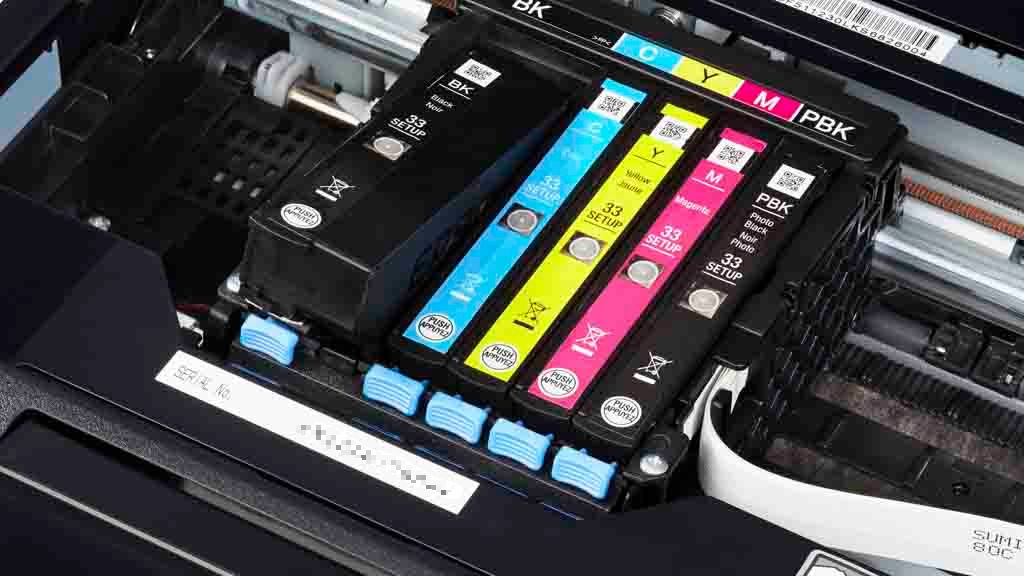
Saving money on printer ink
Ink can be the big money sink, particularly if the model you’re using employs some shady tactics. Some printers will tell you to replace cartridges based upon a count of pages – they may not have run out of ink at all. Others will insist you replace cartridges you’re not actually using, refusing to print a mono page because there’s a missing or empty colour cartridge.
However, you can save a fair bit of cash by using generic ink cartridges or refillable tanks, depending on your brand and model.
What kind of ink does your printer use?
Your ink choice depends on the kind of printer you buy. Laser printers use toner, a powdered substance that comes in a cartridge. Inkjet printers, meanwhile, use ink as the name suggests.
Printer manufacturers sell proprietary cartridges to coax you into buying more of their products. The recommended inks for different types of printing such as colour, monochrome and photo, will be in the instruction manual or specified on the ink packaging.
Every printer manufacturer uses proprietary cartridge systems, though some let you use cheaper generic ones as well. Others block third-party cartridges entirely. In either case, the manufacturers strongly discourage the use of generic cartridges arguing that unofficial ones can damage your printer. These damages aren’t likely to be covered by warranty.
CISS ink, aka ‘big ink’
An alternative to small and thus frequently replaced ink cartridges is a so-called ‘big ink’ system, which draws ink from relatively large ink tanks via tubes. If you go through ink like there’s no tomorrow, a continuous ink supply system (CISS) replaces the original cartridge with a modified cartridge, linked via flexible tubes to external reservoirs of ink that can be topped up at any time.
Epson, HP and Canon have all released CISS compatible printers. There are several makers of third-party big ink systems as well, which you can retrofit to a limited range of existing printer models. While we’ve tested a few official CISS printers, we haven’t looked at the third-party alternatives.
Mono CISS printers only use one type of ink, while colour printers require cyan, magenta, yellow and black. As the ink is used up, you refill the relevant chamber from ink bottles supplied by the manufacturer. The nozzle on the bottle slots into an ink feeding tube of sorts.
The advantage here is that if one colour runs out faster than the others, you don’t need to replace the entire cartridge. Instead, you can just top off the cyan tank for example. When you run out, you can save money by ordering another bottle of the colour you require. It’s by far the most economic way to print, regardless of the manufacturer.
The ink bottles have a resealable cap for storage and are formulated to have a long shelf life with an anti-clogging design. Though each brand is different, Epson ink bottles can supposedly print 4000 pages in monochrome and 6500 pages in colour as an example.
But while this keeps home printing costs low, the initial buy price of ink and a CISS enabled printer is higher. Though there are third-party inks on the market, they’ll likely void your warranty and quite cause problems, including ink streaking and clogged heads.
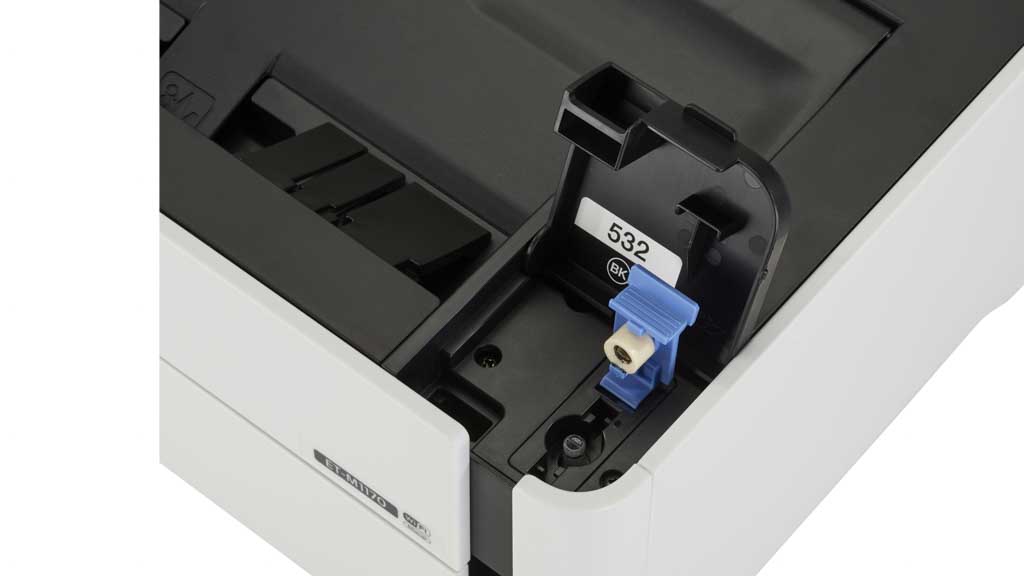
Generic ink cartridges
A number of printer brands and models let you use generic or “third-party” ink cartridges, which are typically cheaper than brand-name options. But be careful, if your cheap alternatives are defective, they might leak toner or ink into your printer and you’ll have serious difficulty cleaning it up.
Never buy cartridges from overseas: many manufacturers have software to prevent them from working, and you may find they can’t be used. Check with your local cartridge recycler for pricing and availability before buying your printer.
Quality
If you need the highest possible print quality, you probably should stick with the branded ink cartridges as they tend to perform a bit better. But for general document printing, generic compatible cartridges work pretty well. You may face issues with fading, as they may be far less durable and more likely to fade over time, and colour accuracy. This is usually OK but not quite true to life, particularly with skin tones.
Damage
The jury is still out on whether a generic cartridge will damage your printer. During our past tests on ink cartridges none of the inkjet printers appeared to suffer head damage.
Warranty
Your printer’s warranty may not cover damage caused by a generic cartridge.
Compatibility
Not all printers on the market will accept generic cartridges, especially newer models. Choosing a less popular printer or relatively new model may mean you have fewer ink cartridges to choose from.
Blocking generic cartridges
Printer manufacturers don’t like it customers using generic ink cartridges and they often try to disable third-party compatibility. One of the more nefarious tactics involves rolling out firmware updates that renders these cartridges useless, even if they have worked up until then.
For example, HP rolled out updates for a number of its printers in 2022 which retroactively blocked third-party cartridges as part its “dynamic security measures.” However, this information was included in the firmware notes which, while difficult to find, was transparent. HP also made no claims about third-party ink support in its advertising for these products.
It’s incredibly frustrating when the printer you’ve used for years suddenly stops working with generic ink. But there is one workaround – turn off automatic updates. That way when your printer pings you about an update you can read the firmware notes to see if third-party ink restrictions are being implemented. If they are, don’t install it if you want to keep using generic cartridges.
Just remember that this may cause some problems if you have a networked printer. Running old firmware may leave you vulnerable to online attacks and it could disable networking capabilities altogether.
Refilling printer ink cartridges yourself
Many (but not all) generic cartridge models offer a refill kit, and this can be much cheaper than buying them brand new. Refilling your own cartridges with a bottle of ink fluid requires patience and a steady hand as it can be fiddly, messy and time-consuming (it takes around an hour).
Overall print quality probably won’t be as good as with original cartridges. That said, for general document printing, it should be fine.
Ink included
More and more manufacturers are including a supply of ink with their new printers. It’s usually described as lasting two years but our test results have found plenty that can last as long as three years. This essentially means you’ll have zero ink expenses for some time, but the starting costs may be higher.
Will your printer work with your PC or Mac?
Printers are built to work with the latest computer operating systems including Windows 11, macOS 15 (Sequoia) and even mobile operating systems such as Android and iOS. Some are also compatible with older versions such as Windows 8, and manufacturers usually ensure that their product will continue to work with most major devices as their software is updated.
Is your printer compatible with your operating system?
Once you’ve decided on a printer, contact the manufacturer or retailer or check their official support site to make sure the model you’re looking at works with your devices, particularly if you want to continue to use an older operating system.
Updates to operating systems may clash with the printer’s firmware, forcing you to wait until the manufacturer issues a compatibility update. Most companies will notify customers on their website, and may even provide a temporary solution while they work on a patch.
While we make sure hardware compatibility matches the manufacturer claims during our tests, there may be short-term compatibility issues when dealing with recent OS updates.
If you own an older printer, or you’re thinking of buying a model that’s been available for several years, check the manufacturer’s website to see if it’s still under active support.
After a while manufacturers will stop releasing software updates as they move on to new models. While basic functionality for the printer or MFP generally remains, companies can be less than proactive when it comes time to inform consumers when widespread support is to end.
How to connect a printer to a PC or Mac
The simplest printers connect to a computer via a USB port. This is the easiest option if you only use one computer for printing at home, as you don’t need to worry about networking. You can also connect your printer directly to a computer via the Ethernet port if you’d prefer. But these methods limit your connectivity options to a single computer. That’s where networking becomes essential.
Most printers also have an Ethernet input which you can connect to a modem or router. Once connected, anyone on the home network can access the printer using via Ethernet or Wi-Fi. Some support wireless Bluetooth connectivity as well, which is a workaround for any potentially complicated networking issues.
But adding a printer to your network isn’t exactly a plug-and-play task. So, we put together a step-by-step guide on how to connect your printer to a wireless network or Bluetooth which you can check out below.
How do you share your printer?
Printers can “share” access from multiple devices, as long yours is connected to a home network. There are two ways to access a shared printer.
Via the host computer
If the printer is directly connected to a computer via USB or Ethernet, other uses can access it as long as the computer is turned on. This is known as the host computer and it essentially acts as a unique printer router, bridging the gap between the printer and your smartphone for example. This isn’t the best option as sharing stops working when the computer is turned off.
Via a home network
When your printer is connected to a modem or router via Ethernet or Wi-Fi, every compatible device on your home network can access it. Though the initial setup is a bit more complex, it’s a much more streamlined solution as a modem or router is designed to be left on 24-hours a day. Connected devices must be on the same network as the printer to allow sharing.
In either case, the connected devices need to have the relevant drivers installed, in order to identify the printer. These are either provided on disk, as part of the software/app, or as a download from the manufacturer’s website.
How to use a printer with a smartphone
Like computers, your smartphone or tablet can connect to a printer as long as it’s on the same network, and it supports the required apps. You could also use Bluetooth if that’s available on the printer.
Apple and Google also have their own options for iOS (AirPrint) and Android (Default Print Service) devices. These are often easier as they handle the networking for you by scanning for supported devices and don’t require additional drivers. They’re more or less the same as AirPlay and Chromecast, but instead of playing audio, you’re sending data to a printer. Some manufacturers also have their own free apps and there are a few third-party options as well.
Check out the article linked below for a step-by-step guide on how to connect your smartphone or tablet to a printer.
What else to look for in a printer
Whether you’ve decided on an inkjet or a laser printer, a standard printer or a multifunction printer, these are some really useful features and printing options to look out for:
Connections
Most modern printers will come with a USB port – and the necessary cables – for direct connection to a computer. Some may also have an ethernet port for joining a wired network, which can be located away from your work desk, helping to save on space.
Duplexing
Automatic double-sided printing can save you a lot of paper costs and wastage over the life of the printer.
Manual feed
This feature makes it easier to print on envelopes, letterhead or specialty papers.
Memory card slot
Many printers support memory cards. This can be very handy for printing a “contact sheet” of thumbnails and selected pictures without needing a computer. Some will be able to handle MiniSD cards with a separate adaptor, but support for Compact Flash and xD cards is less common.
OCR (optical character recognition)
Most multifunctional printers come with OCR software so you can scan in a hard-copy document that will be read as a text or Microsoft Word file. No OCR software is perfect though, so if you plan to use it, check reviews of the software that comes with the printer.
Print heads on cartridge
A printer head that’s not part of the cartridge will often last for the life of the printer itself, but if it does wear out it can be expensive to replace. Cartridges that include a print head won’t usually wear out over the life of the single-fill cartridge, but this adds to the cartridge cost.
Speed
A printer’s advertised speed is the maximum speed of the machine’s engine, measured in pages per minute (ppm).
Status panels
Some printers will include an LCD display with menu options, either as text or with graphics. A detailed display with ‘paper jam’ and ‘low toner’ indicators can be helpful with troubleshooting.
Tray size
The input tray on most personal colour laser MFPs will hold 150 to 250 sheets of A4 paper, and some printers have a second tray for a different paper type such as headed stationery.
Wireless
Wireless connectivity will mean that you can connect computers and other digital devices such as your phone or tablet to your printer without worrying about cables. Variations include AirPrint (iOS only), PictBridge and Bluetooth.
A3 paper
Some printers can print on larger paper sizes – usually A3, but in some cases even larger.
Booklets
Booklet printing sorts the pages so you can fold the output and staple it into a booklet. Note that booklet printing is available with Adobe Reader, so if you save or print a document as a PDF file, you can then print a booklet on any printer (although it’s not so easy if your printer lacks duplex printing).
Borderless printing
Not all printers can print right up to the edge of the paper or a photographic print. If you’re printing photos or graphics, this is an especially useful feature.
Optical disc printing
This can be handy, but exists only on some inkjet printers and requires special printable CD/DVD blanks.
Page per sheet
Most printers can print multiple pages on one sheet of paper, but some can print up to 25 pages on one sheet.
Poster printing
This option automatically segments a large file (designed as an A1 page for example) into smaller pages (e.g. multiple A4s) that can then be joined together after printing.
Transparency
A few inkjet printers can print onto transparencies – this may require special ink.
Watermark
A watermark function lets you print a light mark or outline on the page without requiring imaging software like Photoshop.
How much do printers cost?
Home printers cost from $100 (or even less) for something really basic, to more than $1000 for some of the fancier multifunction models. However, it’s important to factor in the cost of ink or toner cartridges as what initially looks good on paper may not stack up over a couple of years’ use.
The costs of running a printer include the purchase price, the unit cost of ink or toner cartridges, the cost of paper and the cost of electricity to keep your printer on stand-by. Though the costs will stack up if you’re printing pages and pages of paper, these tips can help mitigate that to some degree.
Draft mode
Most printers will let you select a draft mode for printing, which will use less toner. This may be all you need for general text documents. Likewise, check the software settings for a black-only mode, which will avoid mixing in colour toner with black. Some printers do this to produce super-rich blacks for high-quality prints, but it’s unnecessary and costly for general printing.
Duplexing
Automatically printing both sides is convenient and cuts paper costs. It’s also more environmentally friendly.
Outsource your work
Specialist photographic kiosk machines at shopping centres or online services can output glossy standard size (5×7, 6×4) photos at only a few cents per print. Take advantage of advertised low-cost offers to print a lot of photos at one session. Online services can also print your photos in specially designed ready-made photo albums, calendars and cards. Search the web for “online photo service” to find the best deals.
How to recycle an old printer
Printers are covered under the National Television and Computer Recycling Scheme (NTCRS) which means you can recycle your old printer free of charge. All you need to do is drop it off at one of the approved recycling locations.
You can find the nearest location by entering your postcode or address into one of these databases:
Officeworks is usually the closest option, as any store will accept e-waste covered under the NTCRS for free. However, smaller stores tend to have less storage space, so call ahead to make sure they can accept your electronics before driving down.
Recycling printer ink
Though printers are covered under the NTCRS, printer cartridges are not. However, Planet Ark has established its own recycling scheme called Cartridges 4 Planet Ark. Drop-off partners including Australia Post, Officeworks JB Hi-Fi and Harvey Norman, accept any used or empty laser and inkjet cartridges.
To find your nearest drop-off point, enter your postcode at the Cartridges 4 Planet Ark website. Give the store a call beforehand as well, just to make sure that they will take your old cartridges.
Donating your printer
If your printer still works and ink is readily available, then you could consider donating it to a refurbishment program. These services fix up used IT equipment which they give (or sell cheaply) to people experiencing disadvantage.
Recycling Near You lists a handful of refurb organisations. You can also contact your local council or community centre for more information on similar programs in your area.
What are printers made of?
Like computers, a number of toxic materials and hazardous chemicals are used during printer, and printer ink, production. When e-waste like this ends up in landfill or on the curb, chemicals can leach into soil and waterways, particularly during wet weather.
That’s why it’s important to send your old equipment to a recycling centre. Not only will it be disposed of properly, a lot of the materials can be recovered and reused.

